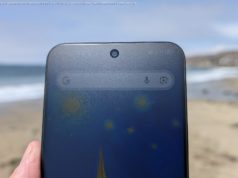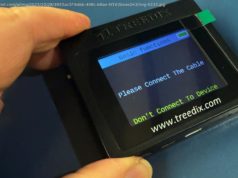What’s the difference between an electric dryer and a gas dryer? Check our quick breakdown of the two appliances, so you know which is right for you.
A friend recently said she’s considering buying a new dryer, since hers is making a thunking sound. When asked if she has a gas or electric dryer, she scrunched up her face and shrugged. If you’re not poking around behind your appliance, you might not know what’s going on inside it.
But if you are going to purchase a new dryer, you need to know what you’re looking for. Just because you have a gas hookup doesn’t mean you have to use it. On the other hand, if you’re not set up for gas and don’t want to go through a whole installation process, electric is your only option. Given the choice, though, is one really better than the other?
How can you tell?
If you just moved into a new place with a washer and dryer hookup but no appliance, you can tell by the outlet. Gas dryers run on electricity to do things like power the lights and turn the drum, but heat with gas. The outlet should look pretty typical, and there will be a capped off gas line in the vicinity. If the outlet is larger — it may have three or four holes for prongs — and you don’t see a gas line, chances are you’ve got an electric setup, which runs on 240 volts. You can snap a picture of the outlet and bring it with you to the appliance store, and they should be able to confirm for you.
For those of you who have an existing dryer, you can always check out the model number. Gas dryers usually have a “G” somewhere in the jumble of letters, while electric ones have an “E.” This isn’t necessarily foolproof, though. Whirlpool makes a dryer with the model number WGD4815EW, which has both and “E” and a “G.” However, the electric version has two “E’s” in its number: WED4815EW .
How they heat
Both types use heat, air, and tumbling to get your clothes dry. The airflow and tumbling go hand-in-hand. While electric dryers use a heating element, gas dryers have a gas burner. In the former, an electric current travels through the heating coil, building up electrons and heating up the metal and in turn, the air. The heated air is then sent into the drum via a blower or fan. Using natural gas or propane, gas dryers use an ignitor to burn the gas. As with the electric version, a blower or fan draws the hot air into the drum.
How about a vent?
Both electric and gas dryers get vented to the outside, thanks to the moist, lint-filled air they expel. Otherwise, you could find yourself with a mildewy basement, not to mention lots of particulates in the air. In addition, the vent on a gas dryer exhausts out the products of combustion, which you also don’t want to breathe. Ventless electric models are often found in apartments because they don’t need to exhaust the air outside. Many of these models are compact, but Whirlpool makes a full-size ventless dryer, the Duet.
There are two types of ventless dryers: condenser and heat pump, and they work a little differently. In the first, the air is heated by a condenser and then travels to the drum and starts evaporating the water from the wet clothes. Air returns to the condenser for a cool down, and while the moisture condenses, the air gets reheated and returns to the drum to start the cycle over again. One thing to keep in mind is that if you don’t have a drain to divert the condensed water, it will collect in a tray you’ll need to empty after each use. Heat pumps use a refrigerator-like compressor technology, recirculates air, and removes moisture from the clothes and air. It uses lower temperatures than conventional dryers, so it’s gentler on clothes.
These dryers are more efficient energy-wise — the heat pump is the most efficient — but their cycles take longer than their vented counterparts. For example, the Electrolux EIED200QSW ventless condenser dryer’s normal cycle starts off at an hour and 44 minutes and will vary based on whether the sensors continue to detect moisture from the laundry. The company’s full-size EFME617STT dries clothes in under an hour using the normal cycle, so it’s a pretty substantial difference. Still, if your condo doesn’t have the conventional laundry hookups, it’s the only way to go.
How much does it cost?
Up front, you’re going to pay around $50 to $100 more for a gas dryer, not to mention the installation cost, which could run you around $150 to $200, says Steve Sheinkopf, CEO of Yale Appliances and writer of the Yale Appliance Blog. Gas dryers are more energy efficient in the long run, according to Energy Star, though that may depend on rates in your area. However, front-load washers spin three times as fast as they did in the early ’80s, meaning clothes aren’t as wet going into the dryer, Sheinkopf points out.
There are now Energy Star-certified dryers, in both electric and gas versions, and the agency says these are up to 20 percent more efficient than standard models. They use moisture sensors to stop the dryer when clothes are dry instead of running the entire cycle and lower heat settings that increase dry times but use less power. This can reduce the cost.
Any other differences?
Manufacturers tend to keep the features the same for the electric and gas versions of the same dryer. Take the Whirlpool model from above: Both have 14 cycles, auto-sensing technology, and four heat levels. The same is true for the much pricier, feature-packed Samsung DVE60M9900V and DVG60M9900V. The electric and gas models have a drying rack on top for small items, steam capability, a vent sensor to detect blockages, five heat settings, and Wi-Fi connectivity.
So, which way should you go, gas or electric?
“If you have gas or electricity, stay with what you have,” Sheinkopf said. “Looking way ahead, the heat pump drying is the most efficient.”
If manufacturers can find a way to speed up heat pump dryers a tad, one day we might all go ventless.






